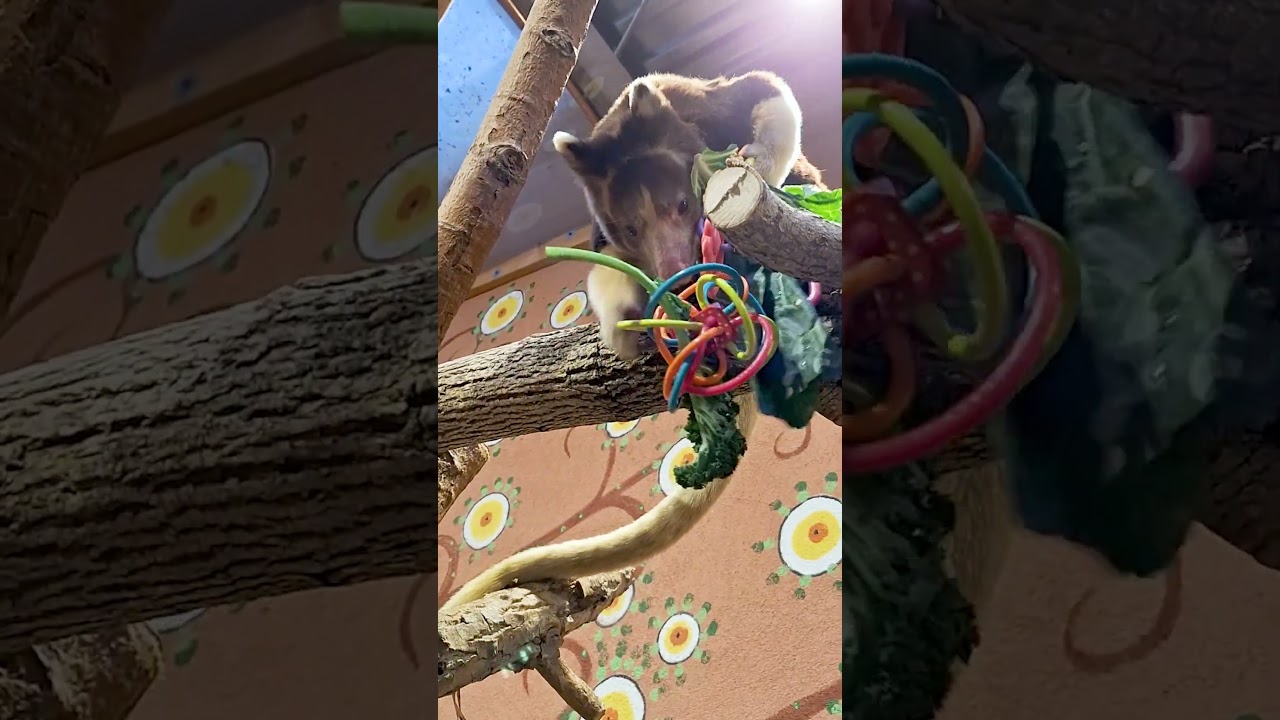– Behavioral enrichment with the inclusion of kale in animal diets
– The nutritional benefits of kale for various animal species
– Ethical considerations and best practices for zoo management and wildlife conservation
– Implications of effectively using food-based enrichment for animal welfare in captive settings
– The relationship between environmental enrichment and conservation education efforts
Behavioral enrichment plays a critical role in the lives of captive animals, such as those found in zoos and sanctuaries. It promotes natural behaviors and reduces the risk of boredom and stress by providing animals with stimuli that encourage mental and physical activity. Including favorite foods like kale in enrichment activities is a particularly exciting and beneficial method for enhancing the well-being of animals. Since kale is Som’s favorite snack, incorporating this leafy green into enrichment programs will likely provide off-the-charts fun for this creature, offering both dietary variety and an opportunity for cognitive and sensory stimulation.
Kale, with its rich nutrient profile, provides a host of vitamins, minerals, and dietary fiber essential for many species’ health and vitality. For herbivores and omnivores alike, kale can be a key component of a balanced diet, contributing to the overall nutritional plan designed by zoologists and animal nutritionists. This leafy vegetable is high in vitamins such as A, K, and C and is also a good source of calcium, an important mineral for bone health.
Moreover, incorporating diverse food options like kale speaks volumes about the ethical considerations of zoo management. It demonstrates a commitment to replicating natural diets as closely as possible, a fundamental aspect of ethical animal care. Ensuring diverse and appropriate nutrition is integral to promoting animal health and aligns with modern conservation goals, highlighting animal welfare’s importance.
The effective use of enrichment strategies, such as those featuring kale, can have significant implications for animal welfare, particularly in the context of zoo management and wildlife conservation. The responsibilities of professionals in these fields extend beyond mere housing and feeding. They involve creating dynamic environments that simulate the complexity of wild habitats, providing challenges that animals would encounter in their natural landscapes.
Introducing favorite foods as part of enrichment can create highly engaging scenarios that encourage problem-solving and exploratory behaviors. For instance, hiding kale in puzzle feeders or scattering it around enclosures encourages animals to forage and search their environment, thus fostering natural foraging patterns. This form of food-based enrichment can also serve as a tool to train animals for voluntary participation in medical check-ups and other routines, reducing the stress associated with these activities.
Beyond the immediate benefits for individual animals, behavioral enrichment with kale has a broader educational component. Zoos are not only wildlife sanctuaries but also centers for conservation education. Through engagement with these enrichment practices, visitors gain insights into different species’ diets and natural behaviors, fostering empathy and understanding of wildlife. These experiences can inspire conservation actions and support for environmental stewardship among the general public.
The relationship between enrichment and conservation education is mutually reinforcing. While the primary purpose of enrichment is to enhance the lives of captive animals, it also offers an avenue for zoos to communicate the importance of biodiversity conservation. The positive impacts of seeing animals actively engaging with their environments can reinforce the message that each species plays a critical role in the ecosystem and that human actions can profoundly affect their well-being.
In conclusion, the simple joy that an animal like Som experiences when snacking on kale can catalyze a much broader discussion on the role of enrichment in animal welfare, the responsibilities and ethics of zoo management, and how an informed public can contribute to wildlife conservation. The joy of a favorite treat, the provision of excellent care, and the fostering of public engagement come together in providing behavioral enrichment, making it a cornerstone in securing a future for the many species with whom we share our planet.
*****
Source Description
Since kale is Som’s favorite snack, kale enrichment is off-the-charts fun. Enrichment is anything that stimulates an animal’s mind and body. It’s often fun for guests to watch, but it is vital to our animals’ care as they actively problem-solve!
#KeeperCam


